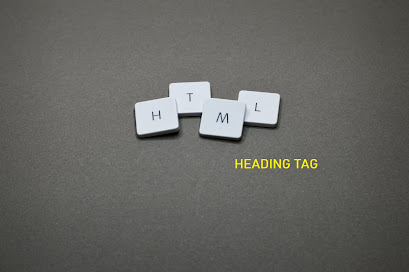HEADING TAG
HTML headings are used to create a hierarchical structure for the content on a webpage. They range from level 1 (the most important) to level 6 (the least important).
The most commonly used heading tags are H1, H2, and H3. The H1 heading is typically used for the main title of the webpage, while H2 and H3 headings are used for subheadings and sub-subheadings, respectively.
To create a heading in HTML, you can use the following syntax:
<h1>This is a level 1 heading</h1>
<h2>This is a level 2 heading</h2>
<h3>This is a level 3 heading</h3>
<h4>This is a level 4 heading</h4>
<h5>This is a level 5 heading</h5>
<h6>This is a level 6heading</h6>
source code for heading tag:
<!DOCTYPE html>
<html lang="en">
<head>
<meta charset="UTF-8">
<meta http-equiv="X-UA-Compatible" content="IE=edge">
<meta name="viewport" content="width=device-width,
initial-scale=1.0">
<title>HEADING TAG</title>
</head>
<body>
<h1>This is a level 1 heading</h1>
<h2>This is a level 2 heading</h2>
<h3>This is a level 3 heading</h3>
<h4>This is a level 4 heading</h4>
<h5>This is a level 5 heading</h5>
<h6>This is a level 6heading</h6>
</body>
</html>
It's important to note that search engines give more weight to headings when determining the relevance of a webpage for a particular search query. So, it's a good practice to use headings to organize your content and make it more discoverable.
Additionally, headings can also be styled with CSS to change the font size, color, and other properties. This allows you to make your headings stand out and improve the overall design of your webpage.
In summary, HTML headings are an important tool for structuring the content on your webpage and making it more discoverable. They also provide a way to improve the design of your webpage by allowing you to style them with CSS.


Comments
Post a Comment
knowledgeable post